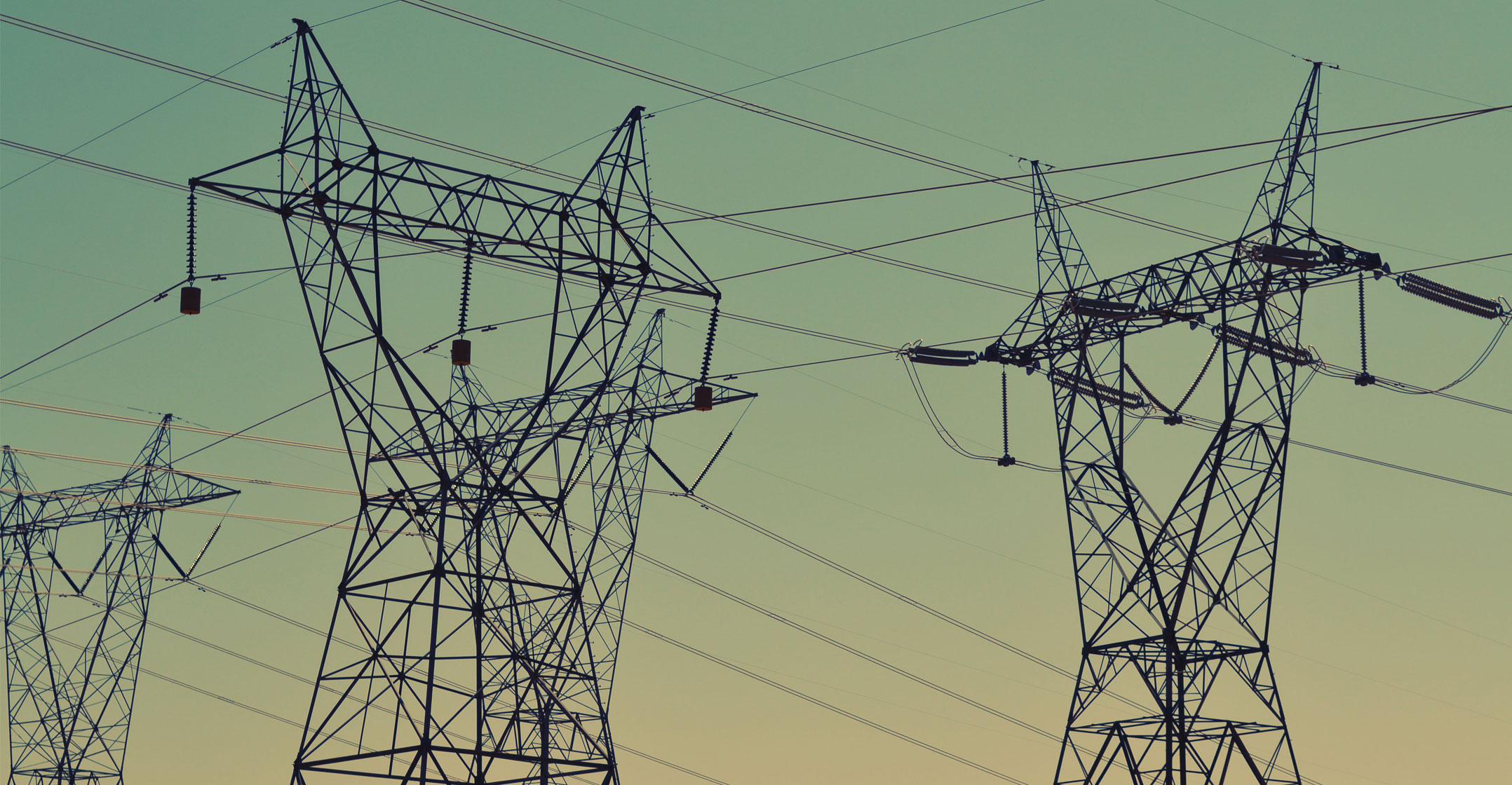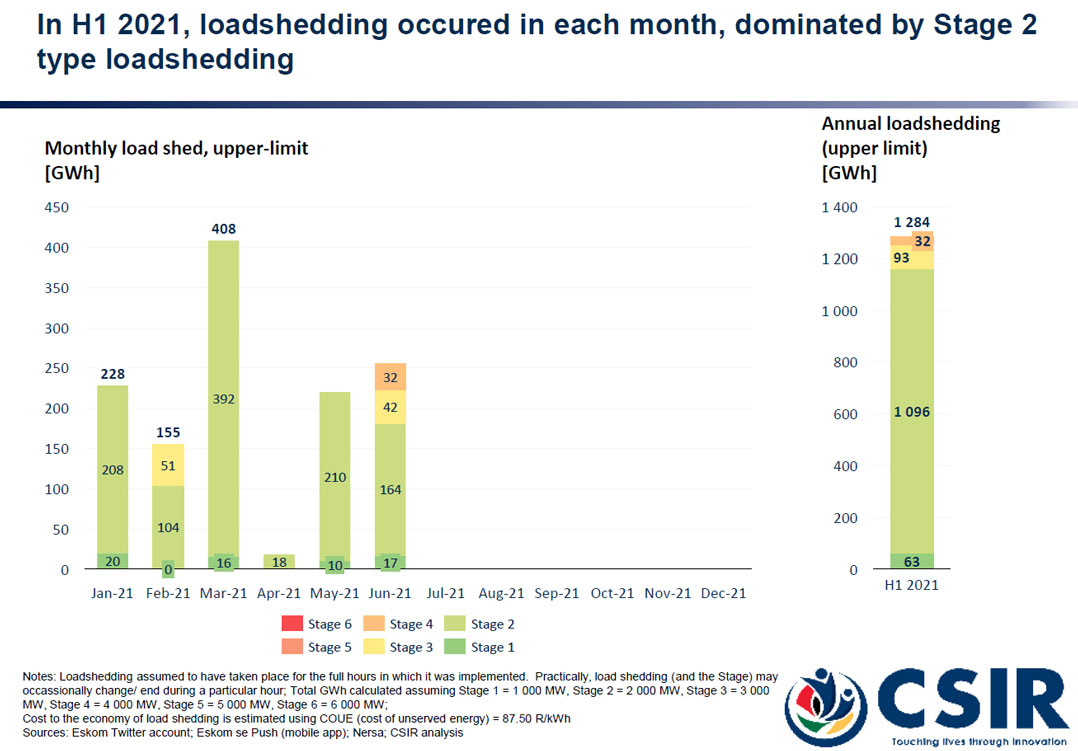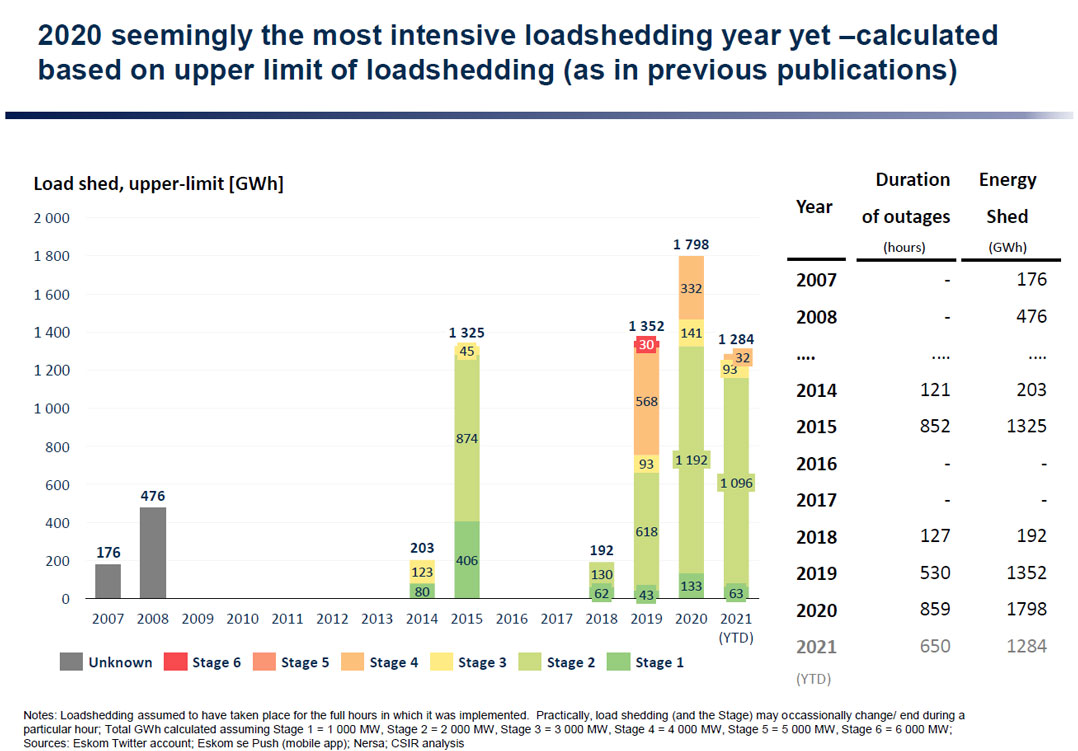 South Africa experienced 650 hours of load shedding in the first half of 2021 (15% of the time), shedding an estimated 963GWh of estimated energy, according to a new report from the Council for Scientific and Industrial Research.
South Africa experienced 650 hours of load shedding in the first half of 2021 (15% of the time), shedding an estimated 963GWh of estimated energy, according to a new report from the Council for Scientific and Industrial Research.
Shockingly, this is 76% of the total load shedding experienced in the whole of last year, suggesting that unless Eskom is able drastically to reduce the unplanned rolling blackouts in the second half of 2021, this year will have a marked deterioration in energy availability compared to any previous year.
In a detailed report entitled “Statistics of utility-scale power generation in South Africa” and released on Thursday, the CSIR showed that system demand increased by 5% in the first half of 2021 compared to the same period a year ago, although this was still 2.2% lower than the first half of 2019.
“Coal continues to dominate the South African energy mix, contributing 81.8% in the first half of 2021 as an additional coal unit at the Kusile power station entered into commercial operation. The contribution from renewable energy sources totalled almost 11% (solar PV, wind, hydro, concentrating solar power and others), while zero-carbon energy sources contributed 14.3% (renewables and nuclear),” the report said.
Declining EAF
On the increased load shedding so far this year, the CSIR said this was “driven by a declining ‘energy availability factor’ (EAF) of the existing coal fleet, where overall the EAF was 61.3% for the first half of 2021 relative to 65% in 2020 and 66.9% in 2019”.


“A concerning shift of the unplanned outage component of the EAF has also been highlighted where unplanned outages of up to 15.3GW were experienced and were greater than 10GW for more than 80% of the first half of 2021.” – © 2021 NewsCentral Media




